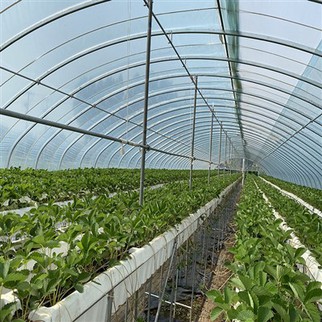Greenhouses are an excellent way to grow plants, flowers, vegetables, and fruits regardless of the weather outside. However, the temperature inside a greenhouse can be quite high, especially during summertime, which can be detrimental to the plants. Therefore, shading is an essential component of greenhouse management. In this article, we will explain how greenhouse inside shading works and its advantages.
Firstly, inside shading is the most common shading technique used in greenhouses. Its purpose is to limit the amount of sunlight that enters the greenhouse and, thus, reduce the heat inside the greenhouse. Inside shading is achieved by applying a coat of shading paint on the interior of the glass or plastic walls. This paint can be white or a lighter shade of green compared to the exterior color of the greenhouse walls. The shading paint helps to reflect the sunlight and reduce its intensity, ensuring that the temperature inside the greenhouse remains at a comfortable level for plant growth.
Advantages of Greenhouse Inside Shading
1. Reduced Heat Stress: Plants are susceptible to heat stress, which can cause damage to their growth and even death. Inside shading ensures that the temperature inside the greenhouse remains at an optimal level for plant growth, reducing heat stress, and promoting healthy plant growth.
2. Energy Efficiency: By reducing the amount of sunlight that enters the greenhouse, inside shading reduces the need for heating or cooling systems, helping to save energy. This, in turn, helps to lower energy costs and reduce the carbon footprint associated with greenhouse production.
3. Increased Control: Inside shading provides growers with greater control over the growing environment, as they can adjust shading levels according to the weather conditions. Growers can also use different shading materials and techniques to fine-tune the greenhouse environment and create optimal growing conditions for their plants.
4. Improved Crop Quality: By controlling the temperature, shading helps to enhance crop quality and yield. Plants that grow in an optimal environment have better color, flavor, and nutritional value, making them more appealing to consumers.
Conclusion
In conclusion, inside shading is a useful tool for greenhouse growers, as it helps to limit the amount of sunlight that enters the greenhouse and, in turn, reduce heat stress and promote optimal plant growth. Its advantages include improved crop quality, energy efficiency, increased control over the growing environment, and reduced carbon footprint. Therefore, growers should consider investing in shading systems to enhance their greenhouse production and achieve better crop yields.







